Maribeth Boelt’s new book A Bike Like Sergio’s will appeal to readers and writers of all ages. It’s a heartfelt story with a message to which readers will relate; the right decision is… Continue reading ![]()
Viewing: Blog Posts Tagged with: mentor text, Most Recent at Top [Help]
Results 1 - 9 of 9
Blog: TWO WRITING TEACHERS (Login to Add to MyJacketFlap)
JacketFlap tags: book reviews, books, mentor texts, writing workshop, mentor text, Add a tag
Blog: A Year of Reading (Login to Add to MyJacketFlap)
JacketFlap tags: mentor text, nonfiction, Add a tag

One of my students checked out Animal Groupsby Jill Esbaum from the library a few weeks ago. When I flipped through it, I knew it was a book I'd want for the classroom. There was just enough text on a page for my students to move beyond merely reading facts. Plus I loved the umbrella that pulled this book together--the things we call groups of different animals.
When I spent a bit more time with the book, I realized that this would also be a great mentor text for informational writing. I am always struck by the quality of the writing in many of the NG Kids books. The writing in this book can definitely be used to study the craft of nonfiction and each page is a short enough piece to be used on its own in a mini lesson for this study.
The word choice is what stood out to me at first. The vets the author chooses are great for helping kids choose specific verbs in their writing. Lines like "parents dive for dinner" and "Flitting through sunshine" are on each and every page. Are there are also phrases that will give kids options for nonfiction writing beyond just writing facts. The page on sea otters starts out "The ocean is a perfect playground for sea otters...." and "They hang upside down, wings folded, awaiting the warmth of the morning sun."
As readers, the book is organized in a way to support readers--good headings, Did You Know? boxes with extra information, a map at the end of the book, and a list of animal groups not included in the main text.
This book is filled with interesting information and great nonfiction writing. I think kids will love it as readers and also as growing writers. So glad to have a copy for the classroom! It looks like Jill Esbaum has several other nonfiction books and I am definitely going to check them out as I think her writing is great for middle graders to study and learn from!
Blog: Miss Marple's Musings (Login to Add to MyJacketFlap)
JacketFlap tags: winter, picture books, snow, onomatopoeia, Lita Judge, sledding, teacher resources, red sled, mentor text, Perfect Picture Book Friday, Add a tag
Title: red sled Written and illustrated by: Lita Judge Published by: Atheneum Books for Young Readers, 2011 Themes/Topics: sledding, animals, onomatopoeia Suitable for ages: 3-5 Fiction, 32 pages Opening: Scrinch, scrunch, scrinch, scrunch, scrinch, scrunch Synopsis: Almost wordless book of the nighttime animal … Continue reading
Add a CommentBlog: A Year of Reading (Login to Add to MyJacketFlap)
JacketFlap tags: character development, mentor text, Add a tag
Mister Horizontal & Miss Vertical
by Noémie Révah
illustrations by Olimpia Zagnoli
translated from the French by Claudia Bedrick
Enchanted Lion Books, 2014
review copy provided by the publisher
Mister Horizontal and Miss Vertical couldn't be more different.
Can you guess who likes gliding, boating and "walking in the desert, with sand as far as the eye can see?" And who likes bungee jumping, rockets, and "New York, the city of sky scrapers?"
More than just a concept book about horizontal and vertical, this is a book about opposites, and a fabulous mentor text for writers of all age and experience who need to practice describing their characters in a variety of ways.
Blog: A Year of Reading (Login to Add to MyJacketFlap)
JacketFlap tags: seasons, mentor text, Add a tag
Fall Leaves
by Loretta Holland
Houghton Mifflin Harcourt
September, 2014
Review copy from the public library, via my amazing literacy coach, Brooke!
The best compliment I can give this book is that I have read it at least 5 times and I am still finding new things to love!
When Amazing Literacy Coach Brooke handed it to me with a, "Have you seen this? I think it would make a fabulous mentor text." I read through it quickly, seeing the short phrases in large font with informational text in smaller font below.
On the next read, I really thought about the word choice for the words in large font. The book begins with, "FALL ARRIVES" and on the next page, "BIRDS LEAVE," then "LEAVES TWIST" and "RAIN FALLS."
I started to form a theory about the pattern of the words on my second read, but I had to read the whole book again from start to finish to confirm it: (spoiler alert) every page has either FALL or LEAVES in the text! Fall can be used as the noun (the season) or the verb (to fall). Same with leaves. So cool! And the text is satisfyingly circular.
On the fourth read, I studied the illustrations and marveled at the use of color, light, and movement that Loretta Holland used to perfectly capture the mood and feel of fall. On Goodreads, I tagged this book "Potential Caldecott."
Finally, on the fifth go-round, I read the nonfiction text under the large words on each page. The science behind each phrase is clearly explained and includes the large words (in italics).
Brooke was right. This would make a fabulous mentor text. Not since Nothing Like a Puffin have I read a picture book that calls to me to use its pattern to write my own version. The hardest thing will be to find two words that can both be used as nouns and verbs. I'm off to my notebook to brainstorm...
Blog: Darcy Pattison's Revision Notes (Login to Add to MyJacketFlap)
JacketFlap tags: writer's block, revise, novel revision, mentor text, bright spots, revision strategy, Add a tag
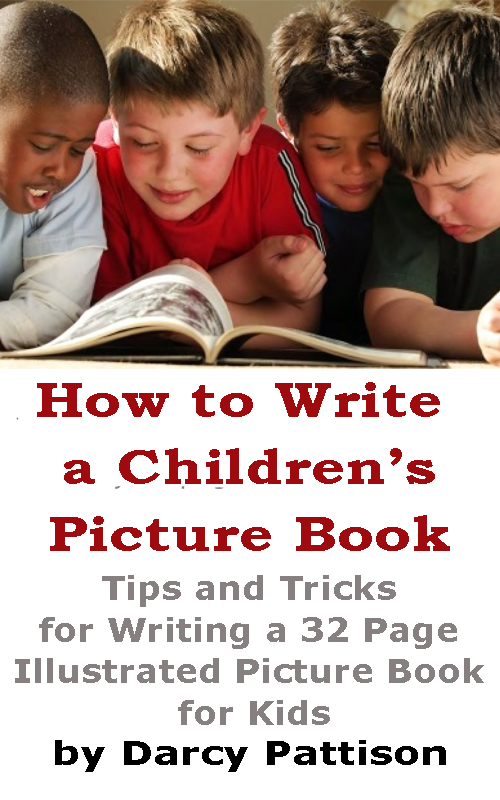 |
The process of revising your novel or story is a series of decisions and understanding the decision process can strengthen your revision process.
Avoid Narrow Framing of the Story
You get a letter from an editor that says something like this: “When Michelle is shot with an arrow, I wonder if she really needs to die. What if she avoids the arrow entirely?”
This frames the revision in terms of whether or not Michelle will be shot with an arrow and then die. That’s too narrow a context for a revision decision, and leaves out many alternate options. What if, she is shot in the leg and can’t walk; or, she is shot in the eye and can’t see; or, she is shot and runs a fever and recovers; or, she avoids the arrow, but Jillian is shot instead; or, (fill in the blank)__________.
Or, you may get a revision note that says the final chapter/climax scene doesn’t have enough excitement and needs more action. Maybe. But what if you revise it, concentrating on the mood the scene evokes, working to make it tense and emotion-filled? Maybe the problem is Mood, not amount of Action present.
When you are presented with only two options, don’t accept that narrow framing of the revision question. You don’t have to answer a “whether or not” question. Work to find other alternates. Editors don’t care HOW you make the story work, only that you do something that works.
You wonder whether or not your character should be red-headed. Narrowly framed questions like this look at the revision in isolated chunks and that’s not helpful. Instead, ask, “How will the character’s hair color influence the story? What if she were blond? Brunette? Red? Black? White?” You don’t just want to know the effect in a small section of the story, but across the whole novel. That’s giving yourself some real options that can lead to decisions that create a stronger revision.
Remove the current option. One trick to make sure you are asking more open-ended questions is to remove the current option; that forces you to take a wider look at your story and its context.
Ask: What if there was no archer, no arrow? What if Michelle never walked into that dark woods where the archer was hiding? What scene could replace this one?
Recognize: The final chapter/scene isn’t working–yet.
Ask: What options do I have to improve the storytelling here?
Multiple answers: Add action, revise for mood, create a totally new scene, keep the action the same but change the setting, keep the setting but change the action, create a different emotional context, and so on.
Multi-track to Give Yourself Options
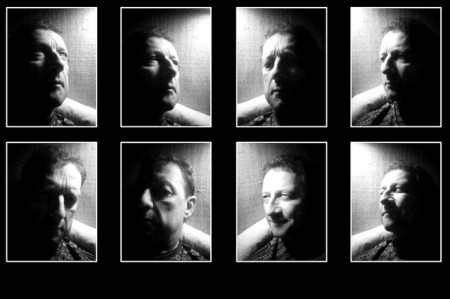
You’ve heard it suggested before: write ten openings to your story. Why do psychologists who study decision-making agree that this is good advice? Because multiple options create a real choice. (I am not talking about multi-tasking here, where you try to do 10 things at the same time; rather, you have multiple tracks ongoing, which gives you choices.)
For example, if you want to buy a house, you don’t just look at one house and make an offer. You would look at many houses, over an extended period of time. Or, to bring it back to publishing, when a book designer presents possible book covers, they don’t just do one cover with minor variations (do you want red or black type; should the typeface be 12pt or 16pt). Instead, they work to bring several totally different concepts to the table.
What do you think of this cover for The Lion, The Witch and the Wardrobe?
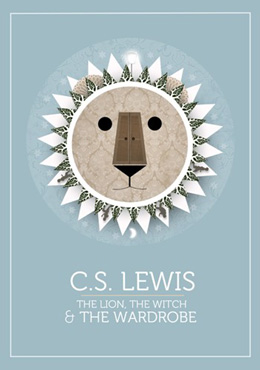
How does it compare to the other previous covers? Each has a distinct visual style. You want the same range of options when you revise.
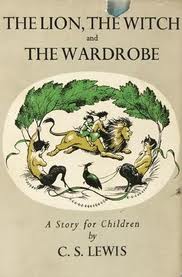
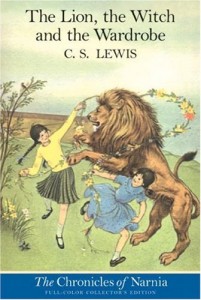
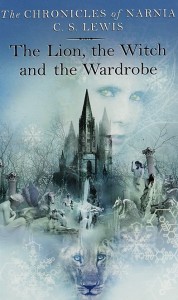
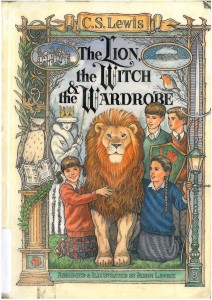
Researchers say it is much better to work simultaneously on several options, rather than to do them in sequence. In other words, write ten opening sentences and then choose where to go next. This is a stronger way of working than to write an opening sentence and follow it with an opening scene; then write a second opening sentence and alternate opening scene; repeat with a third. Working simultaneously on several options yields more creativity and does it faster.
When you create these options for yourself, beware of sham options, or of writing options that obviously will not work. Options that are too bold, the wrong tone, too clichéd, or otherwise obviously off the mark for this novel—these are not real options.
Which of these five would you say are sham options for an opening sentence for a Cinderella story? Which are real options?
- Once, long ago and far away, in a forgotten land, in a forlorn castle, there lived a girl whose mother had died.
- This is the story of Cinderella.
- The kitchen maid sank onto a small stool beside the fire and thrust her feet and hands toward the meager flame, ignoring the cinders that smeared the sole of her boots, permeated the thin fabric of her skirt. She was cold. Bone-cold and weary.
- Cinderella, dressed in yellow, went upstairs to kiss a fellow.
- The new step-mother arrived on a blustery winter day, bringing color and hope to the grieving castle.
When you are stuck on a revision decision, work to give yourself multiple real options. Don’t get stuck asking, should whether or not Michelle will get shot and die or not? Widen the context and find other options.
Overcoming Writer’s Block
What if you really are stumped and the dreaded Writer’s Block is looming on the horizon?
First, look at your manuscript for Bright Spots. I know—in our zeal to revise and improve our mss, we focus so much on places where things are going wrong, that we forget to acknowledge the places where things are going right. This revision strategy asks you to look for Bright Spots, Golden Words (highlight these with yellow marker), Emotional Scenes that make the reader laugh or weep, Exciting Action, or any other place where the writing worked. Try to determine, what made it work?
What did you do well? Can you clone that success?
Approach a scene in the same way as before. What was your process for writing that scene? Repeat it for the scene where you are stuck. How did you create those emotions? Did you concentrate on reliving an emotional episode from your life? Did you mechanically go through and question every verb?
Look at your process, your inspiration, your word choices, the rhythm of the sentences—anything that worked before—and clone it.
If your own Bright Spots don’t help enough, then look for a Mentor Text, someone else’s writing that does what you want to do and try to clone that Bright Spot. Don’t worry about wholesale copying from someone else; you will add your own spin to it. You’re only looking to borrow a storytelling strategy.
Look first at stories similar to yours: if you write YA mystery, look to other YA mysteries. If you can’t find a Mentor Text there, though, don’t hesitate to look farther afield. Maybe a historical non-fiction uses some diary entries to create a sense of historical validity. Could you use fictional diary entries to do the same thing in your story?
Fill in this:
This revision problem is similar to ____________(title of mentor text). This book, solved a storytelling problem similar to mine by________________________.
In other word, you just used an analogy, comparing your storytelling problem to another book/story. If the Mentor Text used a first-person point-of-view, maybe that will work for your story, too. If the Mentor Text used a particularly effective description of the setting—even if the settings are vastly different—maybe that strategy will work in your story.
A variation of this would be to look at Best Practices of writing a novel. For example, Best Practices says that you should never add a flashback to the opening chapter. Oops! You did that. We read many books on how to write a novel, looking for these “best practices,” advice on how to write and revise better. And you would be foolish to ignore creative writing Best Practices. These are a sort of Playlist of Bright Spots.
However, you may also want to try doing the exact opposite of Best Practices. Nothing says it can’t work, it will just take more creativity to make it work.
When you revise a novel or story, you are making a series of decisions, important ones. Look at your decision-making processes to see if you can make smarter decisions and make them faster.
Blog: A Year of Reading (Login to Add to MyJacketFlap)
JacketFlap tags: poetry, Writing Workshop, mentor text, Add a tag
I am thrilled to be part of the 2 year blogiversary celebration of one of my favorite blogs--TEACH MENTOR TEXTS. I have learned so much from Jen and Kellee over the last two years (and have spent lots of money on great new books!) As part of the celebration, they are asking bloggers to share their favorite mentor texts.
I decided to write about an older book--one that I love when it comes to helping kids see what is possible when it comes to writing, HEY WORLD, HERE I AM by Jean Little. I think I learned about this book in 1991 when I attended the Teachers' College Summer Writing Project at Columbia. (I know that this was long ago because I remember recording every keynote on a very high-tech portable cassette recorder!) And when Jen and Kellee asked me to share a favorite mentor text, this one came to mind. It came to mind because it is one that impacts kids' writing every single year.
HEY WORLD, HERE I AM is a poetry book, a journal and more. It was published in 1989 and had many great reviews and awards that year. And even though it is a 1989 publication, so much of it still rings true for children today. This book is a collection of entries by Kate Bloomfield. She writes about siblings, friends, loss and school. She writes with passion and joy and with the insights of of a tween girl.
Each and every entry in this "notebook" is one that children can learn from. I have used this book when launching writers' notebooks as students begin to see all the ways they can make sense of their lives on paper. I've use pieces separately for specific minilessons. "Not Enough Emilys" is one of my favorite pieces in this book. In this piece, the author talks about her friend Emily--but instead of telling us about her by describing her, we learn about her through her actions. It is a powerful piece for both readers and writers learning about character.
I've used this book as a mentor for readers learning to think deeply around text. A poem in the book called "Five Dollars" is about a time when Kate stole $5 from her mother's wallet. The poem is about guilt and is an honest reflection that gets readers thinking in a way that helps them understand the character more deeply.
Another poem I like is poems in this collection is Louisa, Louisa. This is a great poem about a new baby. Welcoming her into the world and celebrating her new life.
I don't think there is a piece in this book I haven't used with students. It is a book I really couldn't live without in my teaching of reading and writing. Kate is a character I love and I love coming to know her through her writing.
Blog: A Year of Reading (Login to Add to MyJacketFlap)
JacketFlap tags: digital, National Day on Writing, mentor text, Ignite, Add a tag
Our 4th grade team is working on a 4th grade project around Making a Difference in the World. We began this project last year and it was inspired by Amy Krouse Rosenthal. The project combines social studies (citizenship, economics, etc.). literacy and art. This year, we've changed a few things and added a few things.
Our 4th graders are busy creating products to be sold at our annual Art Show in March. Students are using art time to create their own products that will be marketable to the audience. I can't wait to shop! Last year, each child donated money earned to an individual cause--one that they cared about and had researched. We changed this a bit this year. Our entire 4th grade will be donating one cause for the money. But we wanted kids to know that money was not the only way to make a difference. We want the to understand there there are lots of ways to make a difference and raising awareness about an issue is one of them.
So, each child has been researching a cause that matters to them. These topics range from homelessness to distracted driving to foster care to pediatric cancer. Kids have spent the last several weeks learning about these issues and collecting information using diigo (more on that at another time!).
This week, kids will begin to create IGNITE-type presentations to educate others about these important issues. As a team, we decided on an IGNITE presentation for several reasons. If you aren't familiar with IGNITE presentations, they are similar to Pecha Kucha sessions but in Ignite, presenters use 15 slides and each slide is up for 15 seconds.The Ignite tagline is "Enlighten us, but make it quick." I love that and it seems that there is a lot to learn when given these parameters. This seems doable for 4th graders and it is an authentic genre.
We knew that this format would support our teaching goals--research, nonfiction writing, visuals to support message, etc. We have noticed that although our students used keynote, the presentations are text, rather than visual driven. We knew that an assignment like this could really improve the way they thought about creating presentations of all kind.
One challenge was to find samples for the students. Since many of them were not familiar with Ignite presentations, we wanted them to spend time studying the craft of the format before they jumped in. Finding Ignite presentations (or PechaKucha) so students could get a feel for the type of work they would be doing was a challenge--many are geared to adults and not appropriate for children. However, we did find several that we used and the conversations around what was possible with these have been wonderful. One of my goals when it comes to digital writing is to collect great mentors for kids--pieces that writers can study as they think about their own decisions as writers. For this project, I found four very different presentations that have helped us think through decision making when creating this type of piece. Each of these four slideshows is very different and each opens up different possibilities for our stuents. The four we have focused on are:
Clowns Without Borders: Pecha Kucha
Why Blog? Ignite by Chris Lysy
Blog: TWO WRITING TEACHERS (Login to Add to MyJacketFlap)
JacketFlap tags: books, video, mentor texts, reflective practice, mentor text, Add a tag
There is no greater agony than bearing an untold story inside of you. — Maya Angelou Remember awhile back when I shared about my YA reading life? I promised to share the way I’m closely rereading and studying a few of the books. One of the titles is Kristina McBride’s (she’s blogger!) The Tension of Opposites [...]![]()



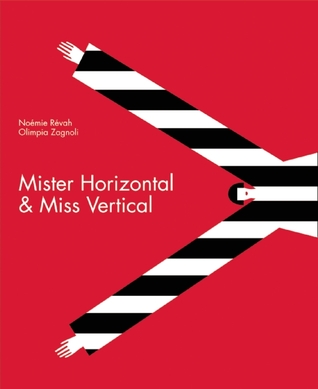



I love this book and use in my classroom each year. ! I also use her other book called I Gave My Mom a castle - love her books!
I don't know this book! Thanks for the introduction, off to order it. :)
It's a book I've shared with students and teachers over & over. It's brief, so a new teacher scrambling to find different pieces that are quick reading, saving them time, is a blessing too. Thanks, Franki for sharing this lovely book.
This is a wonderful mentor text -I especially loved "Mr. Entwhistle" and "Today."